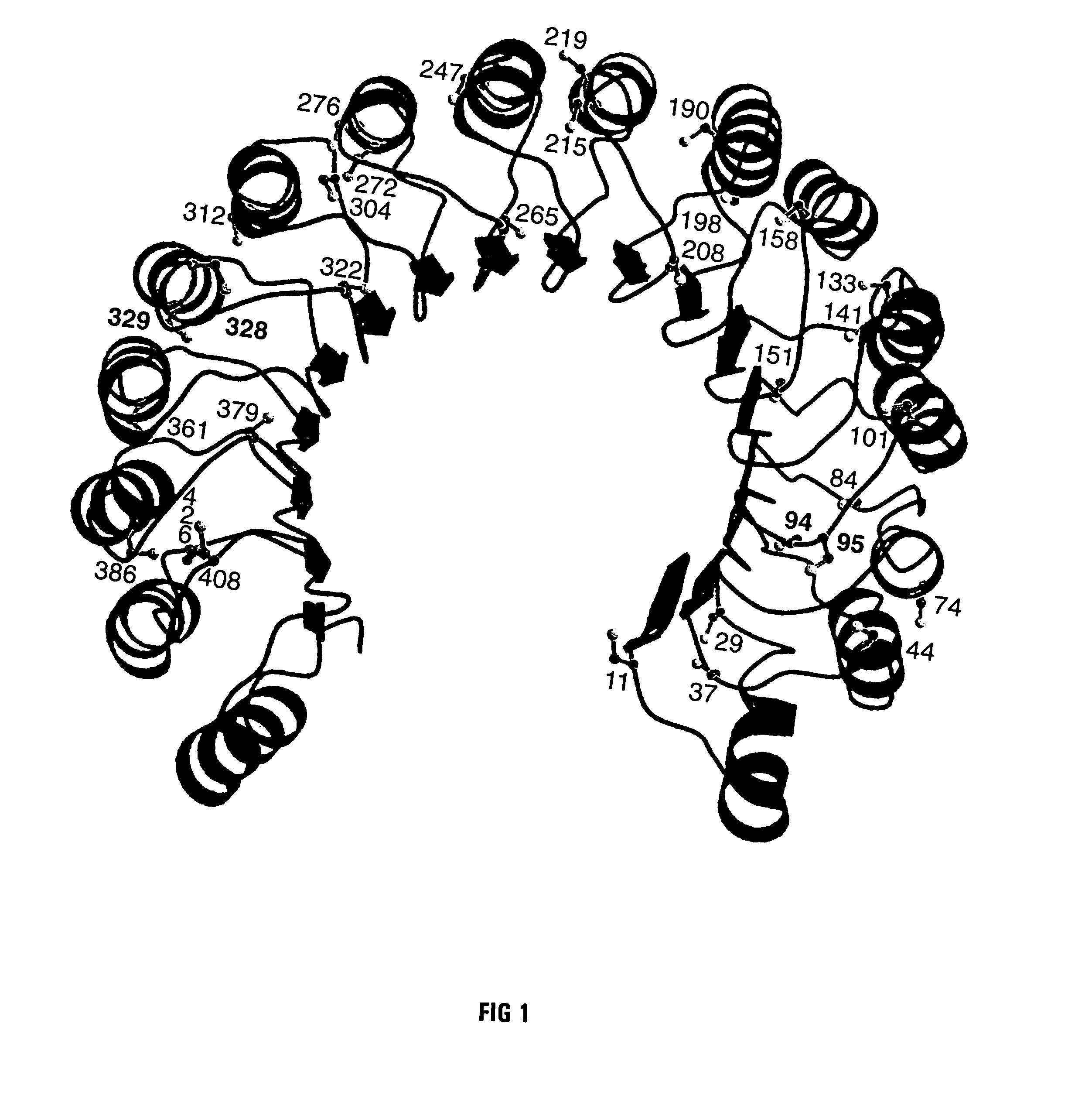Oxidation-resistant ribonuclease inhibitor
a ribonuclease inhibitor and oxidation-resistant technology, applied in the field of oxidation-resistant ribonuclease inhibitors, can solve the problems of inability to inhibit the activity of trace amounts of ribonucleases, the degradation of nucleotide chains, and the inability to detect unwanted enzymes, etc., to achieve stable use and less susceptible to oxidation
- Summary
- Abstract
- Description
- Claims
- Application Information
AI Technical Summary
Benefits of technology
Problems solved by technology
Method used
Image
Examples
examples
[0029]The goal of the work described below was to create mutant forms of human ribonuclease inhibitor which would hinder the cataclysmic oxidation of human ribonuclease inhibitor. Reasoning that the formation of disulfide bonds amongst cysteine residues in the human ribonuclease inhibitor molecule would be most likely to occur among those residues which were closest in space, it was decided to survey the three-dimensional structure of ribonuclease inhibitor to determine those residues which were closest to each other in the normal three-dimensional conformational structure of human ribonuclease inhibitor. FIG. 1 is an illustration of the 3D model that was used for the structure of human ribonuclease inhibitor. Study of that structure revealed that the most proximal cysteine residues in native human ribonuclease inhibitor are those which are adjacent in the primary amino acid sequence as published by Lee et al. (Biochemistry 27:8545-8553 (1988)). The close amino acid residues were th...
PUM
| Property | Measurement | Unit |
|---|---|---|
| pH | aaaaa | aaaaa |
| pH | aaaaa | aaaaa |
| pH | aaaaa | aaaaa |
Abstract
Description
Claims
Application Information
 Login to View More
Login to View More - R&D
- Intellectual Property
- Life Sciences
- Materials
- Tech Scout
- Unparalleled Data Quality
- Higher Quality Content
- 60% Fewer Hallucinations
Browse by: Latest US Patents, China's latest patents, Technical Efficacy Thesaurus, Application Domain, Technology Topic, Popular Technical Reports.
© 2025 PatSnap. All rights reserved.Legal|Privacy policy|Modern Slavery Act Transparency Statement|Sitemap|About US| Contact US: help@patsnap.com



